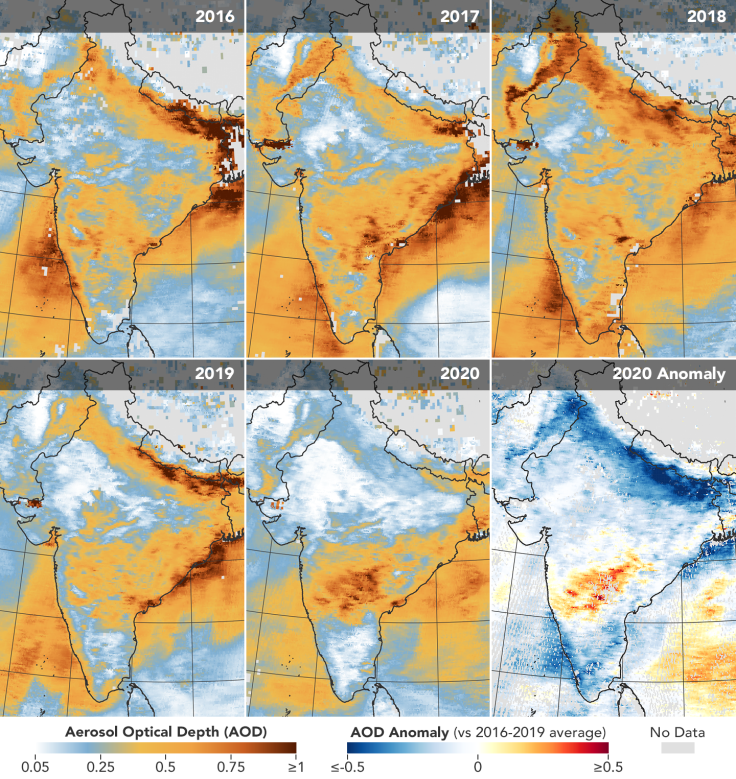NASA Satellite Captures Aerosol Level Plunge In India Amid Coronavirus Pandemic

KEY POINTS
- NASA satellite data shows a significant decrease in aerosol levels over northern India
- The decrease in aerosol levels were observed after just a week of reduced human activity
- The data presents a 20-year low in aerosol levels for this time of year in northern India
A NASA satellite captured the plunge in aerosol optical depth (AOD) measurements over northern India amid the country's strict lockdown. The decrease was observed after just a week of reduced human activities.
The image shared by NASA Earth Observatory presented the AOD measurements over India during the period of March 31 to April 5 from 2016 to 2020, while the sixth (anomaly) map showed the AOD average in 2020 compared to the 2016-2019 average.
It was apparent in the images the AOD measures from 2020 were significantly lower compared to neasurements from 2016-2019.
According to Universities Space Research Association (USRA) scientist at NASA's Marshall Space Flight Center, Pawan Gupta, the changes in pollution signature were initially difficult to observe during the first few days of the lockdown. This was because heavy rain poured over northern India on March 27, just two days after the lockdown was enforced, so the initial change during the first week was brought about by both the rain and the lockdown.
Typically, such downpours help clear the air of aerosols, but the levels tend to pick up again and come back to normal after the heavy rain. After the late March rain, however, the aerosol concentrations did not increase again.
"After the rainfall, I was really impressed that aerosol levels didn't go up and return to normal," Gupta said. "We saw a gradual decrease, and things have been staying at the level we might expect without anthropogenic emissions."
By early April, the AOD levels in northern India were already "significantly" below the norm for that time of the year. In fact, the levels were the lowest in 20 years of observation using the Moderate Resolution Imaging Spectroradiometer on the Terra satellite.
"We knew we would see changes in atmospheric composition in many places during the lockdown," Gupta said. "But I have never seen aerosol values so low in the Indo-Gangetic Plain at this time of year."
Typically, human and industrial activity in the Ganges Valley in northern India generate the majority of aerosols, whether from vehicles, coal-fired power plants or smoke from heating and cooking stoves from rural areas. However, with millions of people under lockdown due to the coronavirus pandemic, the emission sources were significantly reduced.
Interestingly, the same trend cannot be said for other parts of India. Southern India, in particular, did not see the same decrease in aerosol levels, but, in fact, the aerosol levels were even slightly higher than the past four years. According to NASA Earth Observatory, it was still unclear why this was so, but it could be related to factors such as weather patterns or agricultural fires.
Although the national lockdown in India has been extended until May 3, officials announced some key sectors could open under strict conditions. This includes the agriculture, construction and manufacturing sectors.
© Copyright IBTimes 2024. All rights reserved.






















